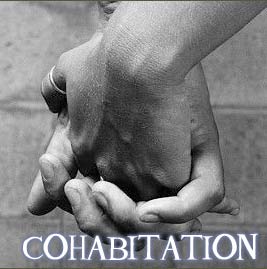Tech entrepreneur Daniel Gulati suggests "technology skills will be crucial for future employment prospects" in his recent post on the Harvard Business Review's Blog Network. Over the last fifteen years internet users have grown from 70 million to 2.2 billion, and the ability to use technology has become a necessary skill at all levels of employment. To help everyone attain and retain proficiency as a technologist, Gulati provides five recommendations: Be an end user Read More …
Trends
America’s Most & Least Religious States (#0688)
Last week Gallup released the newest list of how religious residents of each state are based on the percentage of respondents who self-identified as "very religious." A majority (51% or more) are very religious in seven states: Mississippi (59%) Utah (57%) Alabama (56%) Louisiana (54%) Arkansas (54%) South Carolina (54%) Tennessee (52%) A relatively small minority (less than 3 in 10) are very religious in five states: Vermont (23%) New Hampshire (23%) Maine (25%) Read More …
Worship Practices (in the USA) (#0687)
"FACTS on Worship: 2010," the latest Faith Communities Today (FACT) report, provides insight into the current worship practices in churches by means of an aggregated data set that includes responses from over 11,000 congregations affiliated with over 120 denominations. Worship is changing. The latest research shows increasing diversity in several areas, including: Time: Most services are held on Sunday morning (74%), but other weekend options are significant: Sunday Read More …
Mosques in America Growing Rapidly (#0686)
The number of mosques in America is growing rapidly. Lauren Markoe's Religion News Service article explores the recent growth through the lens of "The American Mosque 2011," a recently released report that overviews the findings of a survey produced by "a coalition of Islamic civic groups and Muslim and non-Muslim religion scholars." Notably: Total number of mosques: 2016 Growth in number of mosques since 2000: 74% Most mosques take an approach that is other Read More …
Living Together Before Marriage (#0684)
"Living together before marriage no longer a predictor of divorce" was the headline of page 21A of my local newspaper last Thursday. The AP article reports on some of the findings of a recent marriage survey of 22,000 men and women. The number of couples living together before marriage has grown from around 10% in the 1960s to around 60% today. While a generation ago those who cohabited before marriage were more apt to divorce than those who did not, today there Read More …
Being and Becoming Virtually Religious (#0681)
“Virtually Religious: Technology and Internet Usage in American Congregations," the latest Faith Communities Today (FACT) report, provides insight into the current role of technology in churches by means of an aggregated data set that includes responses from over 11,000 congregations affiliated with over 120 denominations. Congregational use of technology continues to increase: During the most recent decade (2000-2010) congregational use of email and websites more than doubled: email Read More …
King Chrome (#0677)
On Sunday March 18, 2012, Chrome officially became the leading browser for the first time. Tarmo Virki, writing for Reuters, explains: On March 18, Chrome was used for 32.7 percent of all browsing, while Explorer had 32.5 percent share. When people returned to their offices on Monday, the IE share rose to 35 percent and Chrome's share slipped to 30 percent. So What? Googles' Chrome has been climbing and Microsoft's Internet Explorer has been fading for quite some time. Over the last year, Read More …
Is the World Getting Better? (#0672)
William McKenzie recently used his "Texas Faith" column in the Dallas Morning News to explore the question: Is the world getting better? Rather than answering the question personally, McKenzie provides responses from several local religious leaders to respond. Each leader provided a narrative response. Their responses fall into three categories: The world is getting better. Those favoring this position include Geoffrey Dennis (Rabbi, Congregation Kol Ami, Flower Mound; Read More …
Top Challenges for the Mainline (#0667)
Carol Howard Merritt, a Presbyterian pastor and the author of Tribal Church: Ministering to the Missing Generation (2007 – read my review here) and Reframing Hope: Vital Ministry in a New Generation (2010 – read my review here), chaired a national committee for the Presbyterian Church (USA). She shares the four significant challenges for the next generation as identified by the committee: Our denomination is over 90% white, while the overall population Read More …
Top Church Websites (#0664)
Sharefaith recently posted their list of 22 Top Church Websites on Church Relevance. The alphabetically ordered list includes: Church on the Move - Tulsa, OK Fellowship Church - Grapevine, TX Imago Dei Community - Portland, OR Hillsong Church - London, UK LifeChurch.tv - Edmond, OK Mars Hill Bible Church - Grandville, MI Second Presbyterian Church - Memphis, TN Watermark Community Church - Dallas, TX So What? The author notes that this updated list for Read More …








